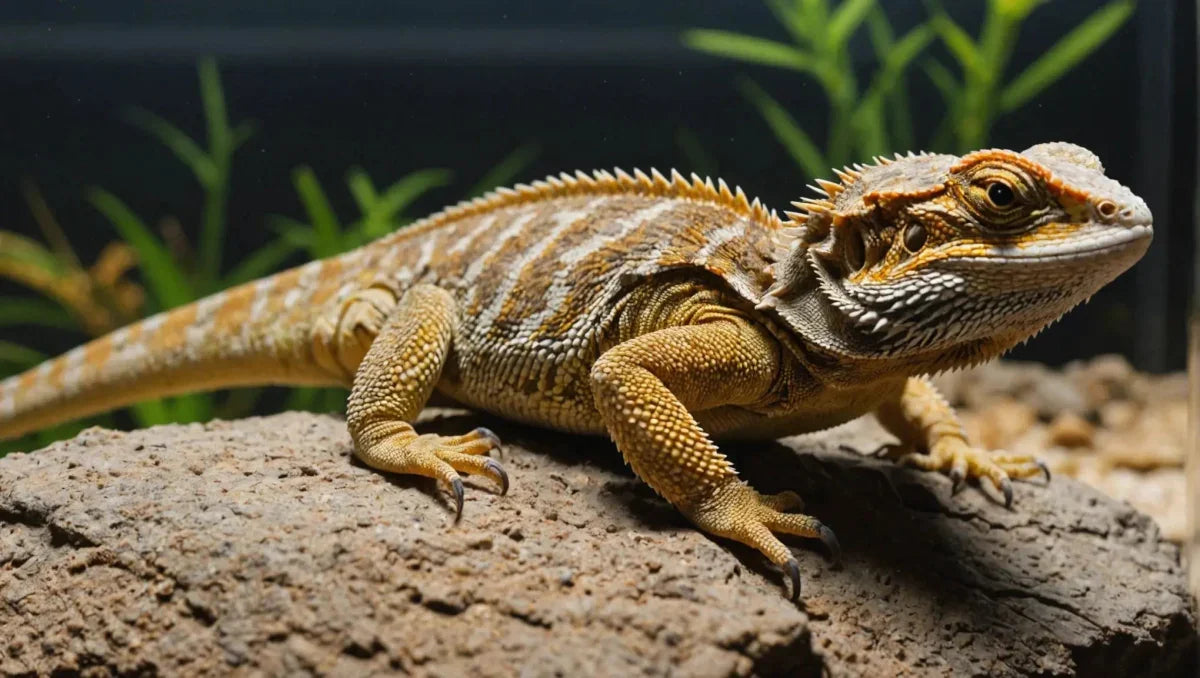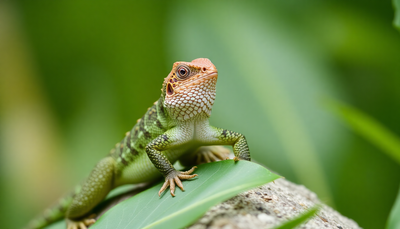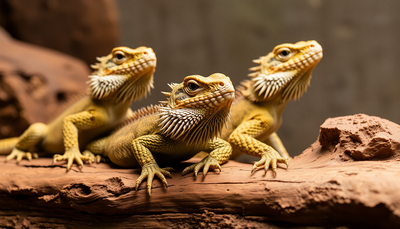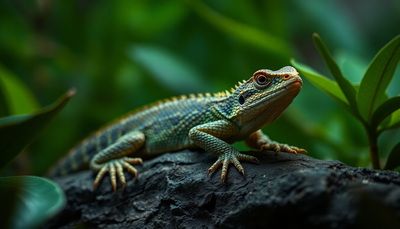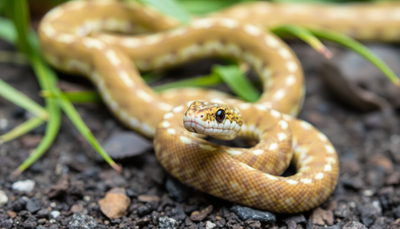Welcome to the Ultimate Guide for Ensuring the Optimum Temperature in Your Bearded Dragon's Tank!

Proper care and attention to temperature levels are essential for the health and well-being of these fascinating reptiles. In this comprehensive guide, we will explore the importance of maintaining the right temperature range, the potential risks of incorrect temperatures, and the best practices for creating a comfortable environment for your bearded dragon. Whether you are a seasoned reptile enthusiast or a new dragon owner, understanding and managing tank temperature is crucial. Join us on this educational journey as we delve into the specifics of temperature control, heating options, temperature monitoring, and how to address temperature-related issues. By the end of this guide, you will be equipped with the knowledge and tools to ensure that your bearded dragon thrives in a habitat that meets its temperature requirements. Let's dive in and create a warm and cozy haven for your scaly companion!.
Factors Influencing Tank Temperature
Maintaining the optimal temperature in an aquarium is crucial for the well-being of aquatic life. Several factors, both internal and external, can influence the water temperature within the tank. Understanding and managing these factors are key responsibilities of aquarists to ensure a stable and comfortable environment for their aquatic companions.
Ambient Room Temperature
The ambient room temperature plays a vital role in regulating the water temperature in the tank. It is essential to consider the seasonal variations and how they might affect the aquarium. During colder months, room heaters may be necessary to prevent a drastic drop in water temperature. Conversely, in warmer weather, additional cooling methods might be required to keep the tank from overheating.
Location of the Tank
The location of the tank within a room can significantly impact its temperature. Placing the aquarium near doors, windows, or air vents can expose it to drafts, direct sunlight, or cool outdoor air, leading to temperature fluctuations. To maintain stability, it is advisable to position the tank away from such sources of external influence and in a central area of the room.
Heat Sources
Internal heat sources within the aquarium, such as lighting fixtures, filters, and pumps, can contribute to fluctuations in water temperature. LED lights, in particular, emit heat and may raise the water temperature if not properly managed. Aquarists should strategically place these heat-generating elements and consider using cooling fans or chillers to offset any temperature spikes.
Substrate
The choice of substrate in the aquarium can also impact temperature regulation. Dark-colored substrates tend to absorb more heat from lighting and the environment, potentially increasing the water temperature. On the other hand, lighter substrates reflect light and heat, helping to maintain cooler conditions. Aquarists should select substrates based on their desired aesthetic as well as their thermal properties to achieve the ideal temperature balance.
By meticulously considering these external and internal factors, aquarists can create a harmonious environment where aquatic life thrives. Monitoring the temperature regularly and making adjustments as needed are essential practices for maintaining a healthy and sustainable aquarium ecosystem.
Ideal Temperature Ranges for Bearded Dragons
Daytime Temperatures
Bearded dragons, native to the arid regions of Australia, rely on external sources of heat to regulate their body temperature effectively. For a healthy and happy bearded dragon, it is crucial to maintain the right temperatures in their enclosure. The daytime temperatures play a vital role in providing the necessary warmth for digestion, activity, and overall well-being.
Basking Spot
The basking spot, where your bearded dragon absorbs heat and UVB rays, should ideally range between 95-110°F (35-43°C). This temperature range mimics the intense heat they would experience while basking in the Australian desert sun. Ensure that the basking area is easily accessible and that your dragon can fully expose itself to the heat source.
Cool Side
While the basking spot is crucial for thermoregulation, the cool side of the tank should offer relief from the heat. Maintaining a temperature range of 75-85°F (24-29°C) on the cooler side allows your dragon to retreat and cool down when needed. Creating this temperature variation within the enclosure is essential for enabling your pet to self-regulate its body temperature effectively.
Nighttime Temperatures
As the sun sets in the desert, temperatures drop, creating a cooler environment for bearded dragons to rest and recuperate. During the night, it is recommended to maintain temperatures between 65-75°F (18-24°C) in the enclosure. This nighttime drop in temperature is essential for allowing your dragon to enter a state of restful sleep.
Heating Solutions
To ensure that nighttime temperatures remain within the optimal range, consider using a ceramic heat emitter or a low-wattage heat bulb. These heating solutions provide gentle warmth without emitting light that could disrupt your bearded dragon's sleep cycle. Monitoring the temperatures closely and adjusting the heating sources as needed will help create a comfortable environment for your pet throughout the day and night.
Additional Tips
In addition to maintaining the ideal temperatures, always use a reliable thermometer to monitor the temperature gradients within the enclosure. Avoid placing the enclosure in drafty areas or direct sunlight, as these can lead to temperature fluctuations that may stress your bearded dragon. By providing a well-regulated thermal environment, you can ensure that your pet remains healthy, active, and content in its habitat.
Monitoring and Adjusting Tank Temperatures
Importance of Monitoring Tank Temperatures
Maintaining the proper temperature in your aquarium is vital for the health and well-being of your aquatic pets. Fluctuations in temperature can stress fish and other inhabitants, making them more susceptible to diseases. By using quality thermometers and temperature guns, you can accurately monitor the water temperature and make timely adjustments as needed.
Types of Thermometers and Temperature Guns
There are various types of thermometers available for aquarium use, including digital, floating, and strip thermometers. Digital thermometers are highly recommended for their accuracy and ease of use. Temperature guns, also known as infrared thermometers, are handy for quickly measuring surface temperatures of objects in the tank.
Heating Devices for Aquariums
Aquarium heaters are essential equipment for maintaining tropical fish tanks at the right temperature. Submersible heaters are commonly used and come in different wattages to suit various tank sizes. It's crucial to position the heater near a water flow source for even heat distribution.
Cooling Solutions for Aquariums
In warmer climates or during summer months, aquarium water temperatures can rise to uncomfortable levels for fish. Cooling fans and chillers are effective tools for reducing water temperature. Fans help with evaporation and cooling, while chillers actively lower the water temperature to the desired level.
Regular Temperature Checks and Maintenance
To ensure a stable environment for your aquatic pets, it's important to perform regular temperature checks throughout the day. Keep a log of the temperature readings to monitor any fluctuations. Additionally, check the functionality of heating and cooling devices periodically to prevent malfunctions.
Importance of Proper Temperature Ranges
Different species of fish and aquatic organisms have specific temperature requirements for optimal health and growth. Research the temperature preferences of your tank inhabitants to provide the most suitable environment. Some fish may thrive in slightly cooler waters, while others require warmer temperatures.
Seasonal Temperature Considerations
As seasons change, outside temperatures can influence the overall temperature of your aquarium. Be mindful of how weather variations impact your tank's temperature. Adjust your heating or cooling devices accordingly to maintain stability despite external climate changes.
Temperature-Related Health Issues
Sudden temperature shifts or prolonged exposure to incorrect temperature ranges can lead to health problems in fish, such as stress, weakened immune systems, and susceptibility to diseases. Be vigilant in monitoring and maintaining stable temperatures to prevent these issues.
Advanced Temperature Control Systems
For large or specialized aquarium setups, consider investing in advanced temperature control systems. These systems offer precise regulation of temperature, often with automated features that adjust settings based on real-time data. Advanced systems can provide peace of mind for complex aquatic environments.
Conclusion
Monitoring and adjusting tank temperatures is a critical aspect of successful aquarium maintenance. By investing in quality thermometers, temperature guns, heaters, and cooling devices, you can create a comfortable and safe habitat for your fish and other aquatic species. Remember to observe your pets for any signs of stress due to temperature changes and take prompt action to rectify any issues. Maintaining stable temperatures not only promotes the well-being of your aquatic pets but also enhances the overall beauty and longevity of your aquarium setup.
Conclusion
Maintaining the correct temperature in your bearded dragon's tank is essential for their overall health and well-being. By carefully monitoring and regulating the temperature gradient within the enclosure, you can create a comfortable and stress-free environment for your pet. Remember to provide a. basking spot With temperatures around. 95-100°F And a. cooler zone Around. 75-85°F To allow your bearded dragon to. thermoregulate Effectively. Proper care and attention to temperature control will help ensure a happy and thriving pet.


